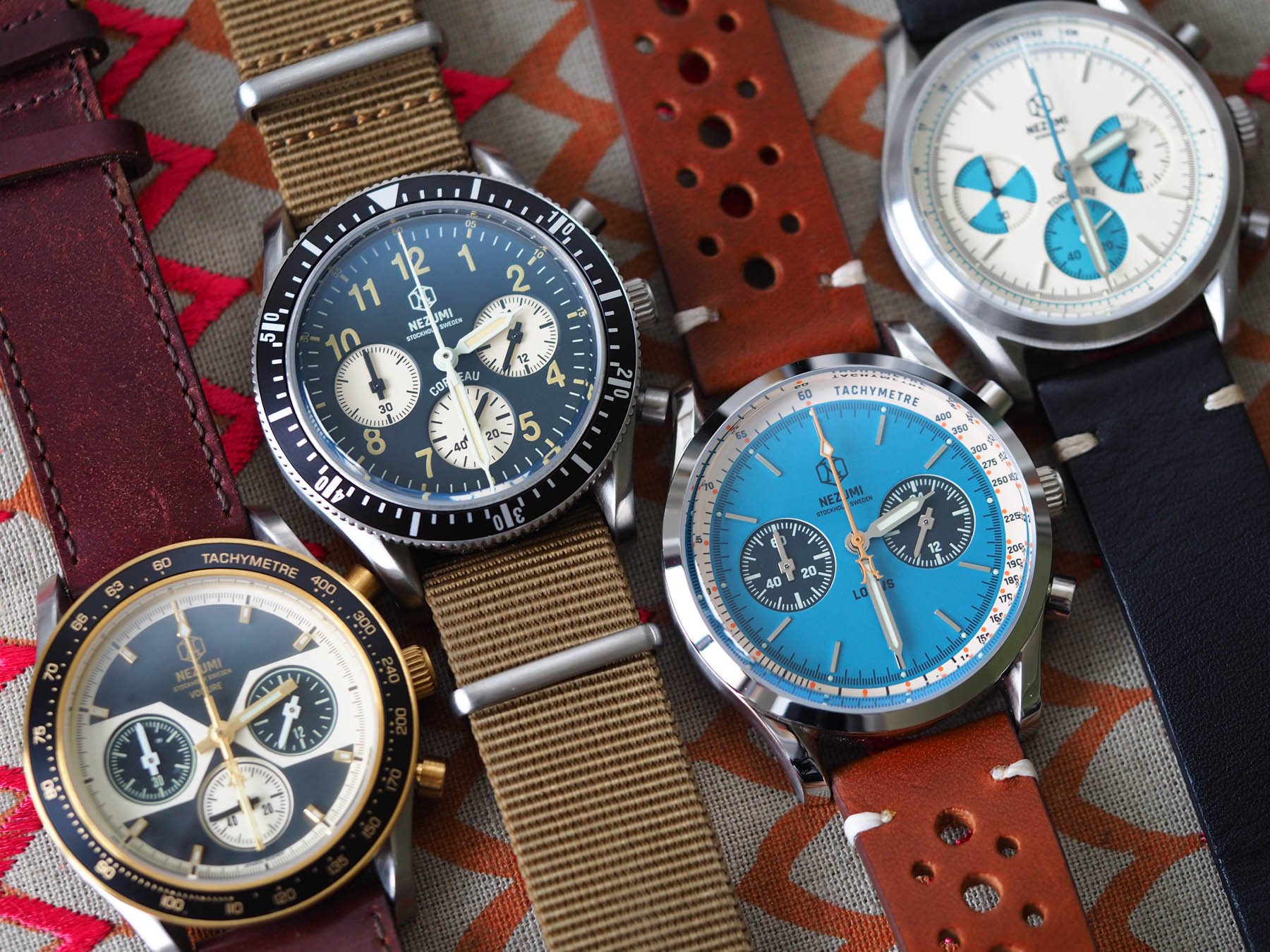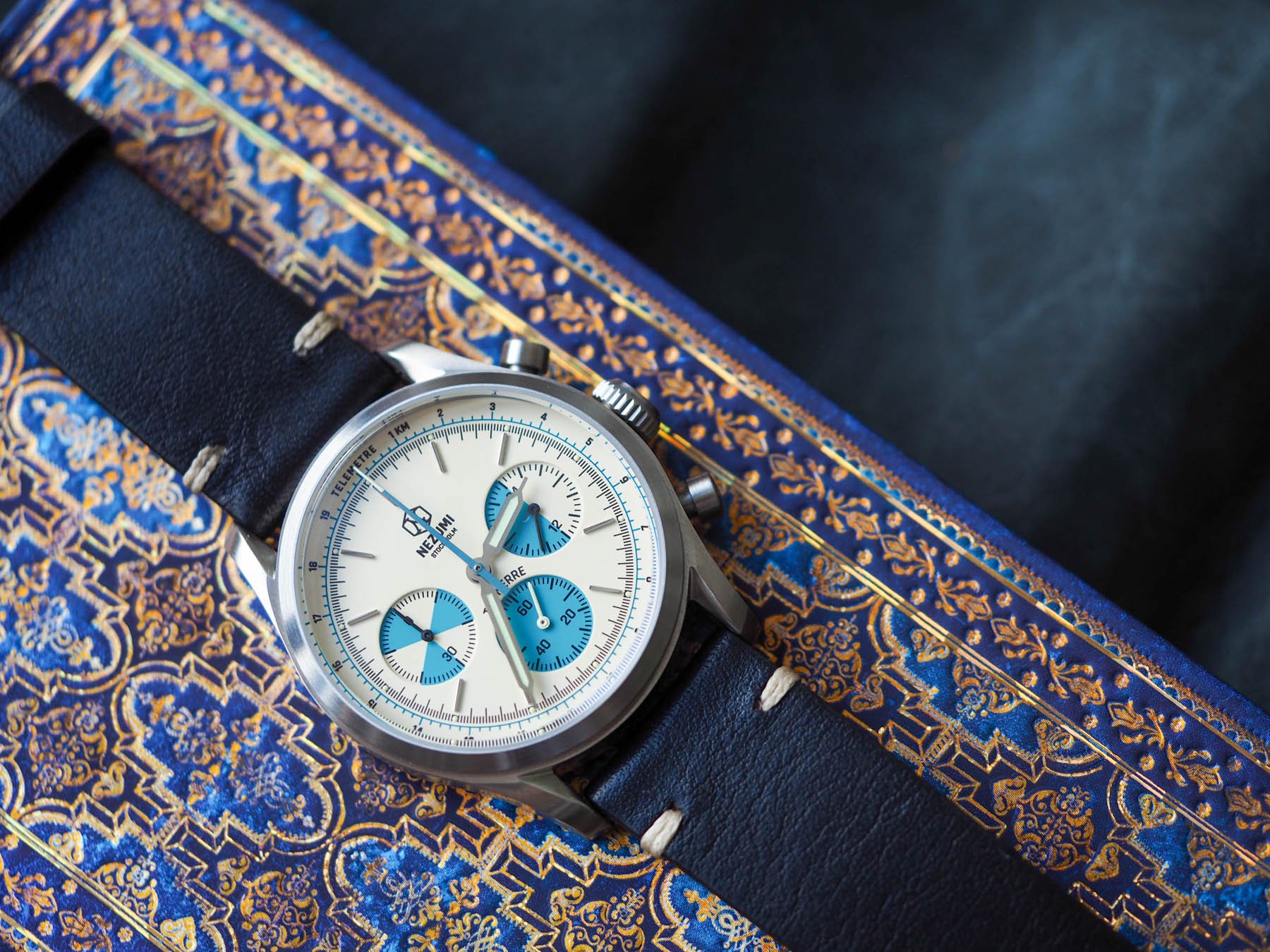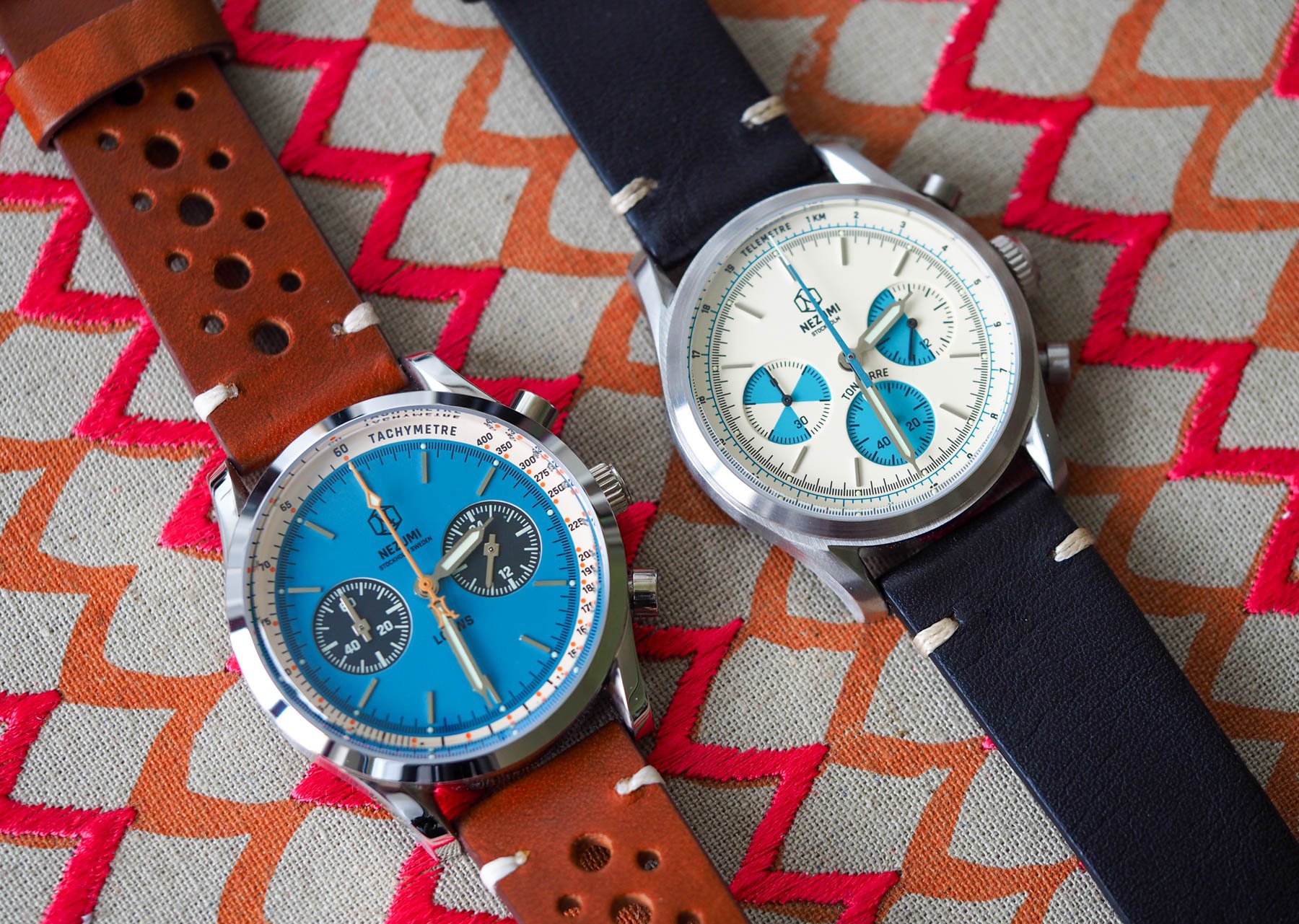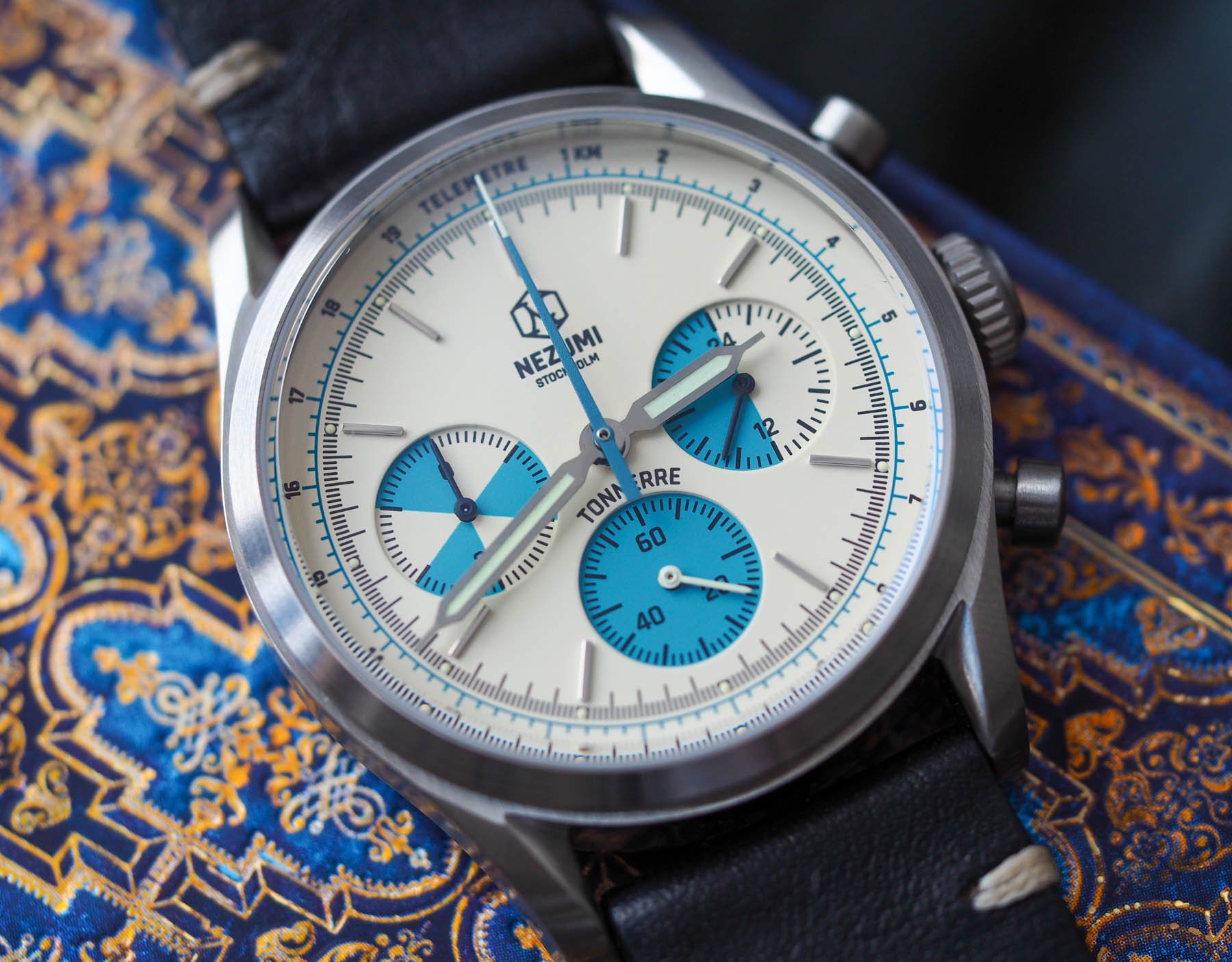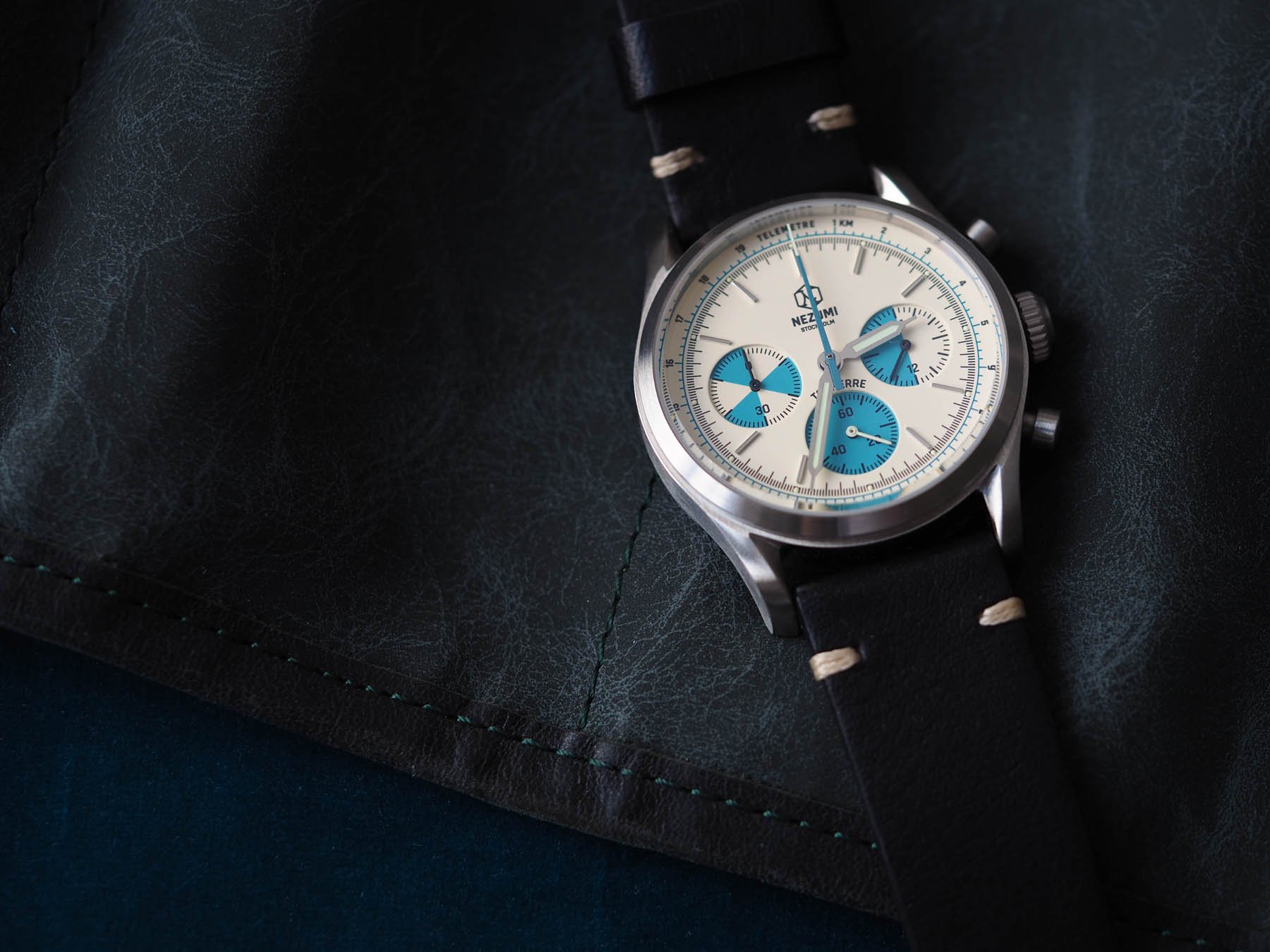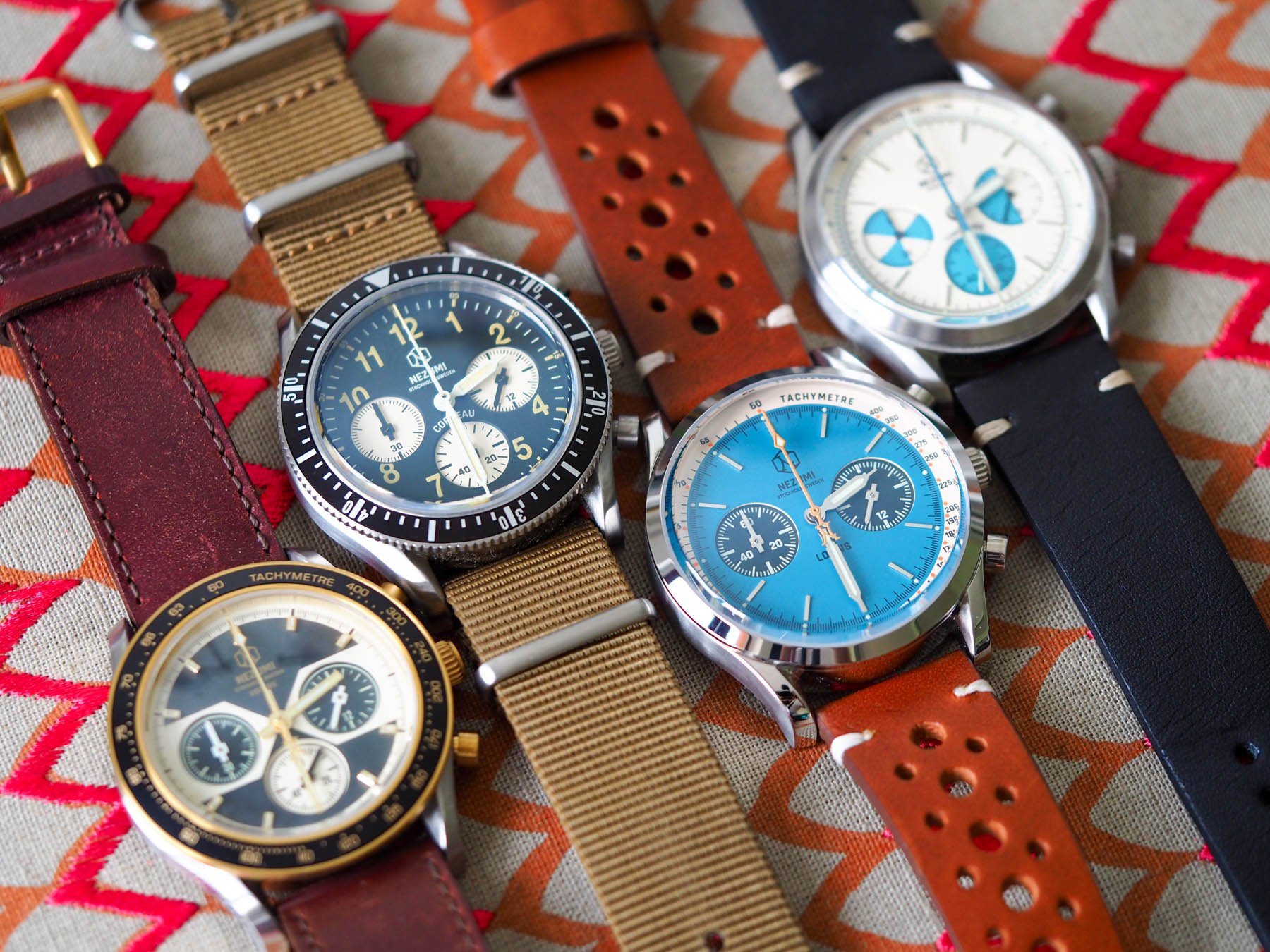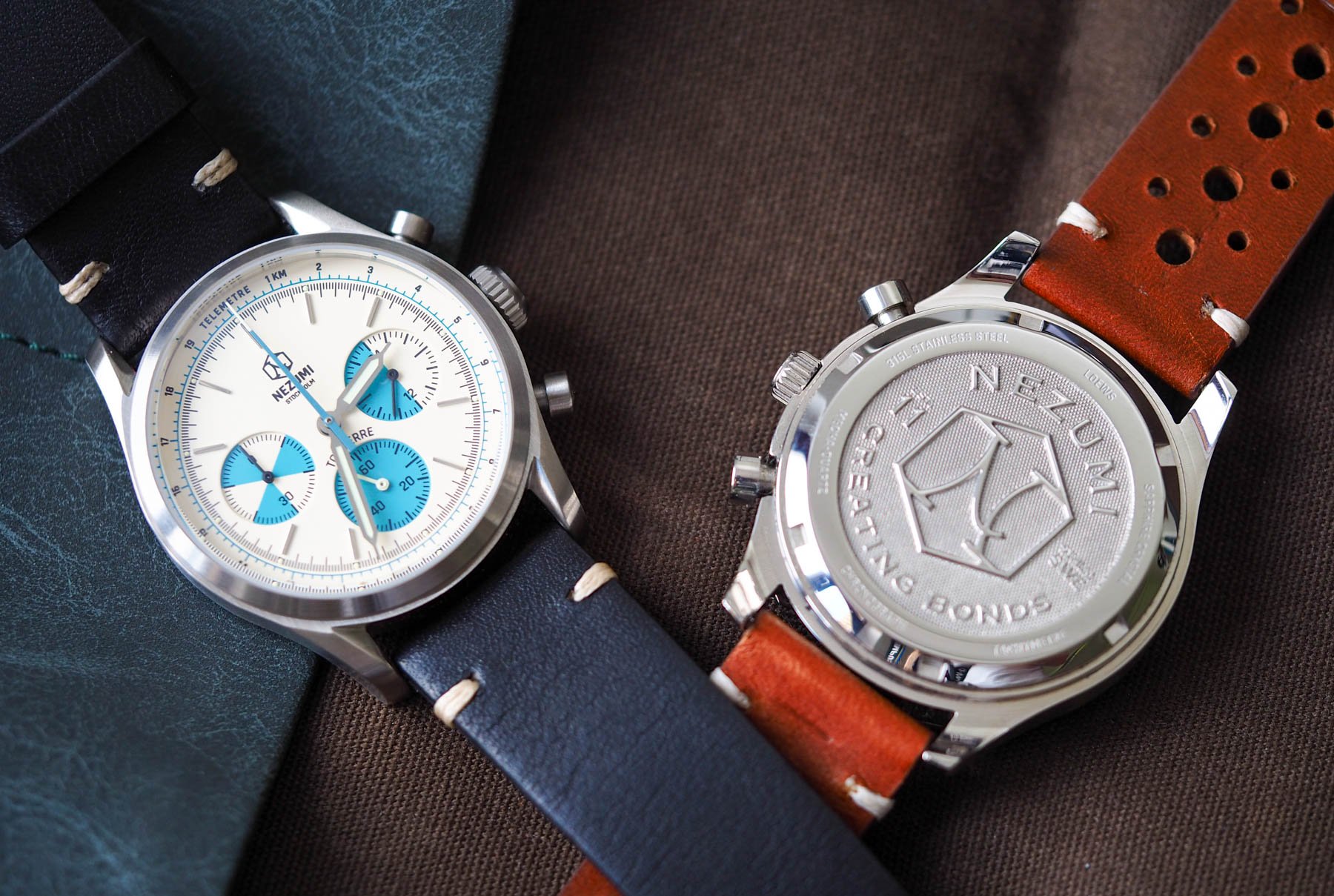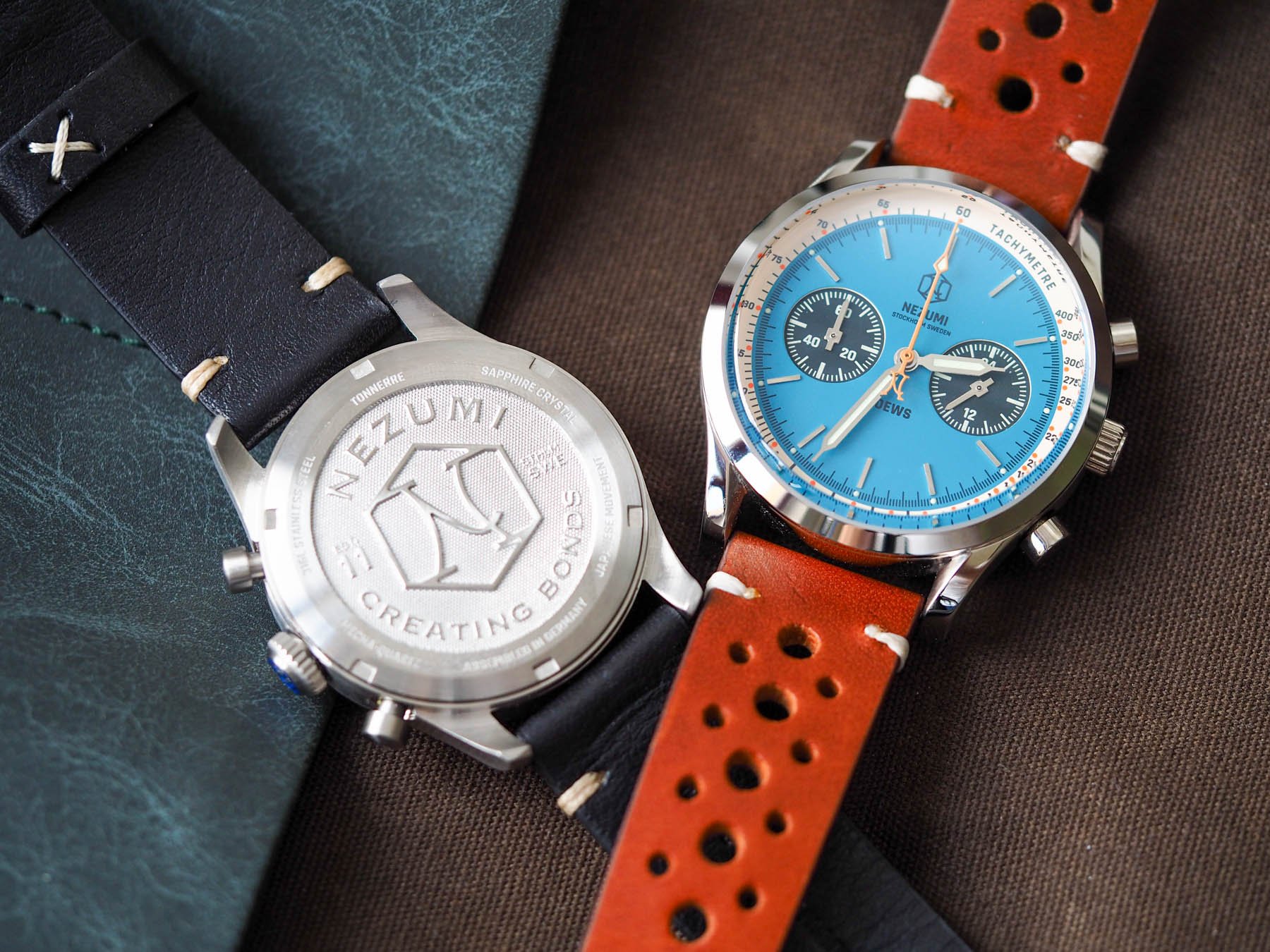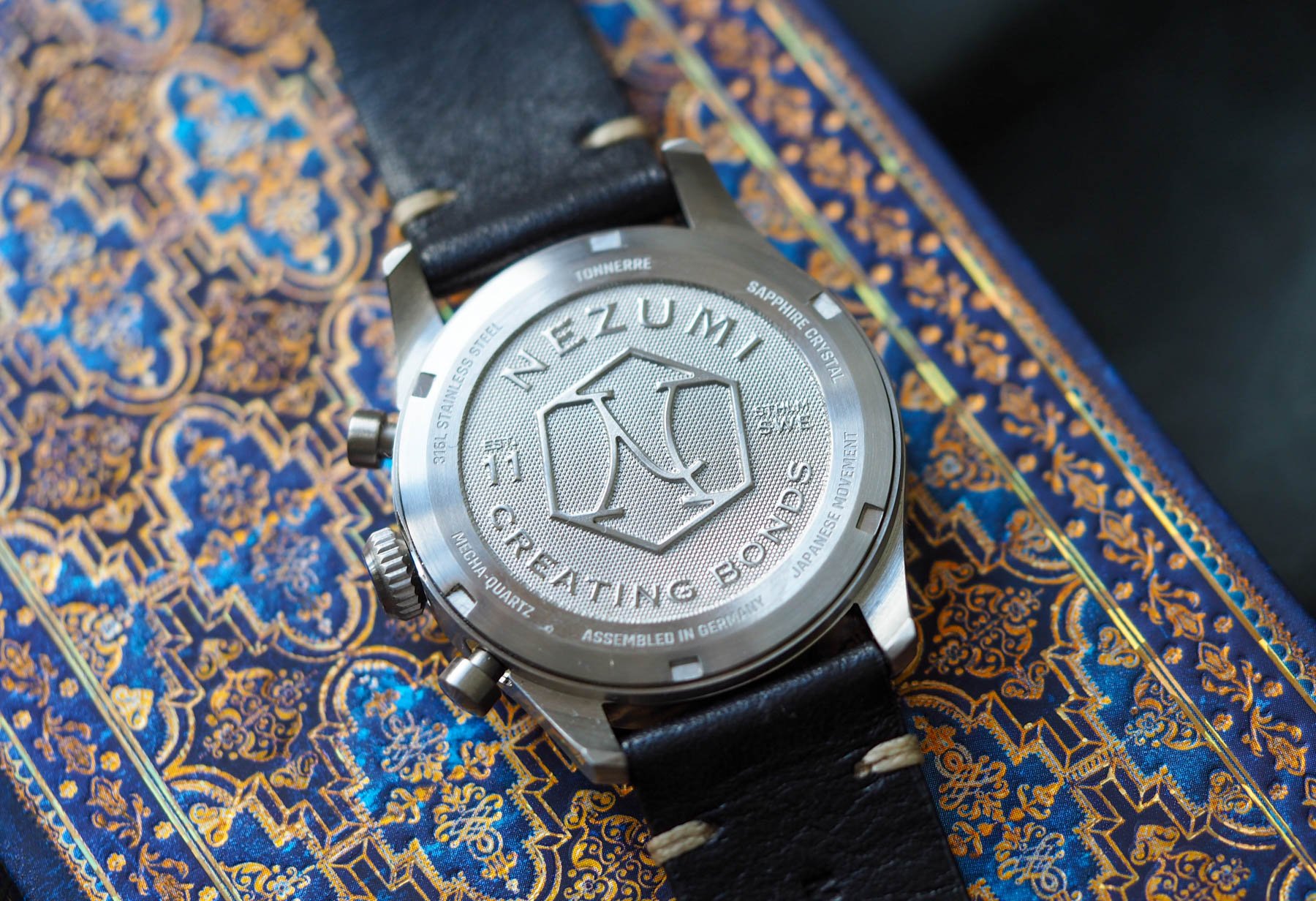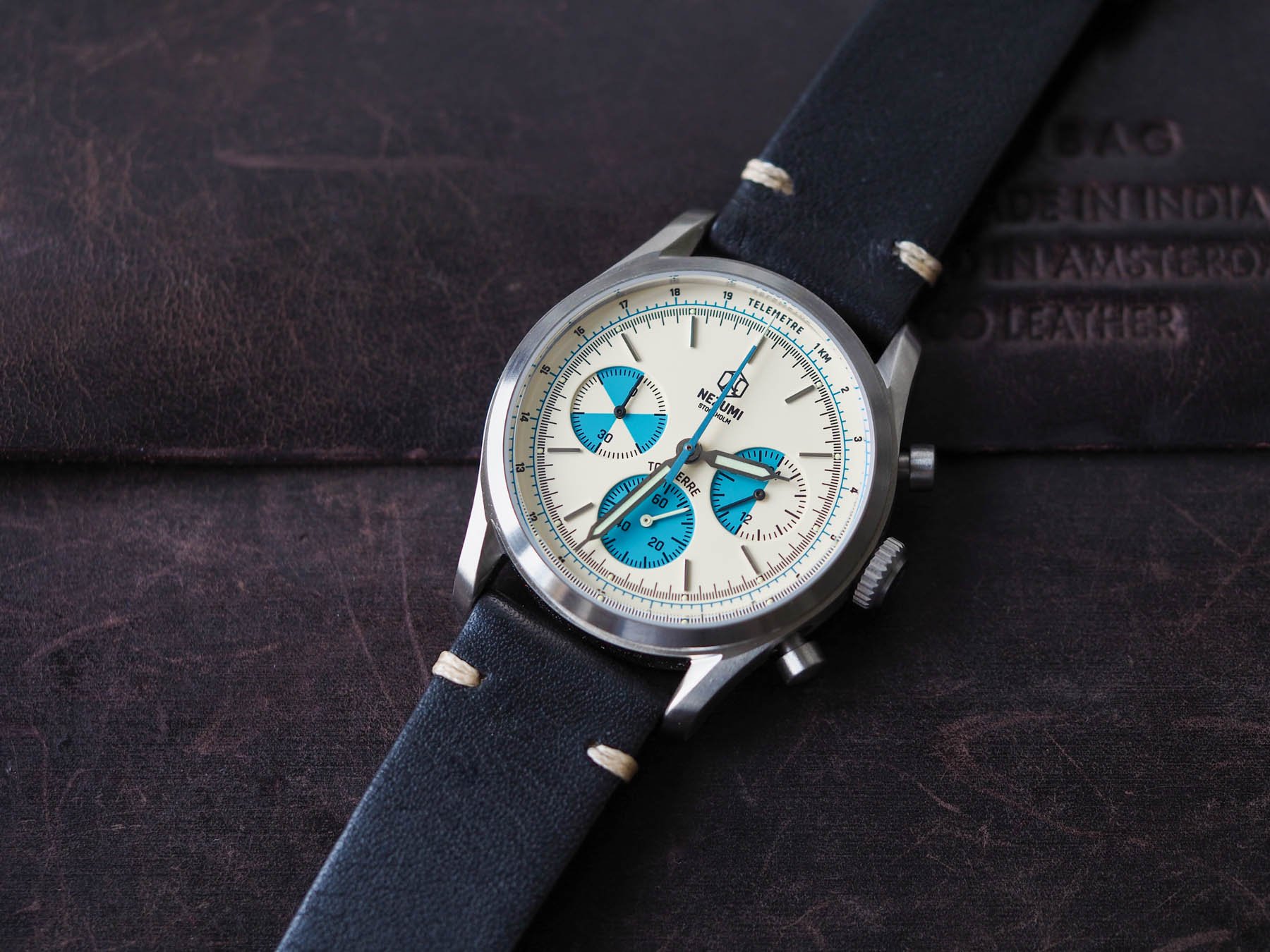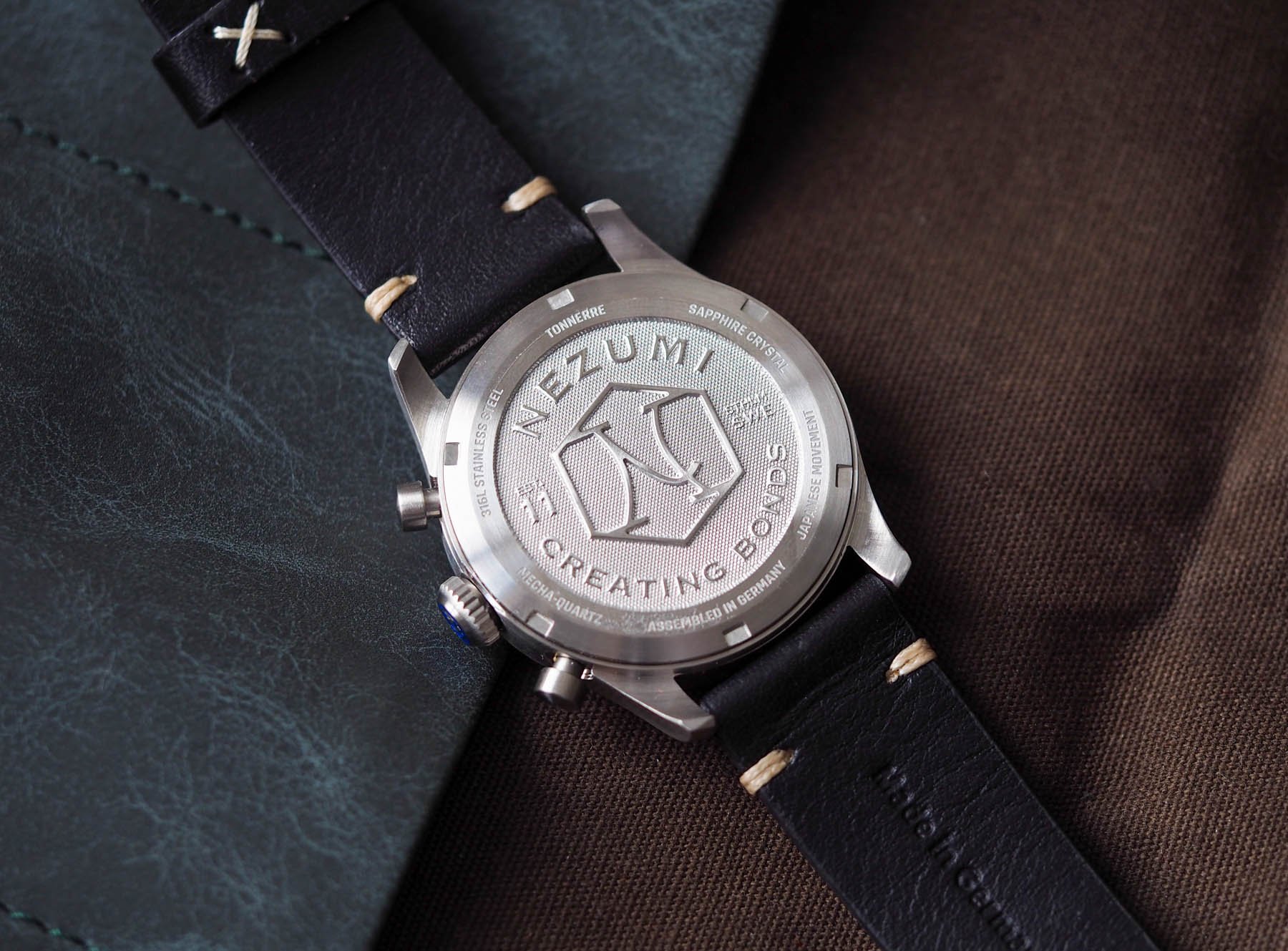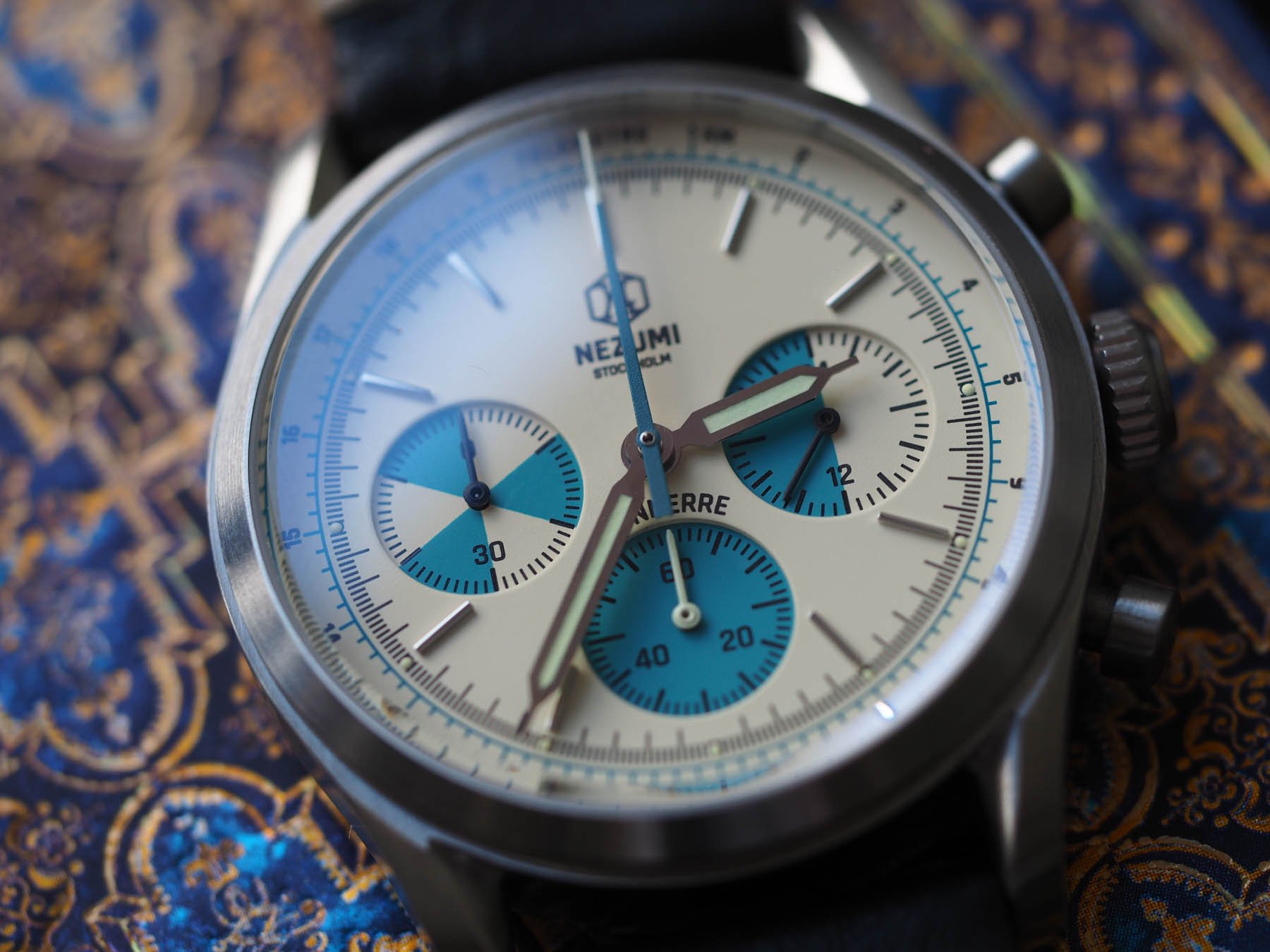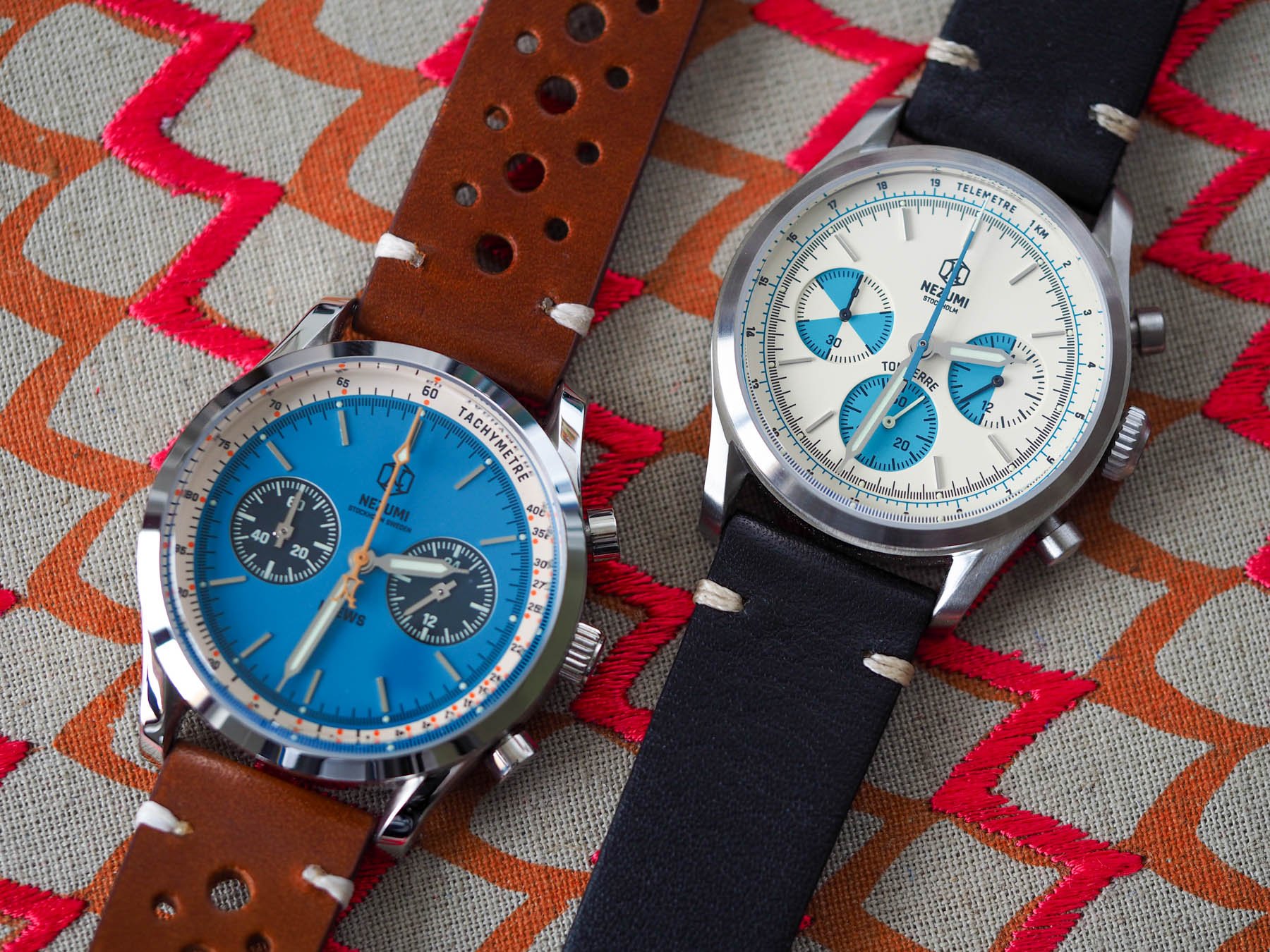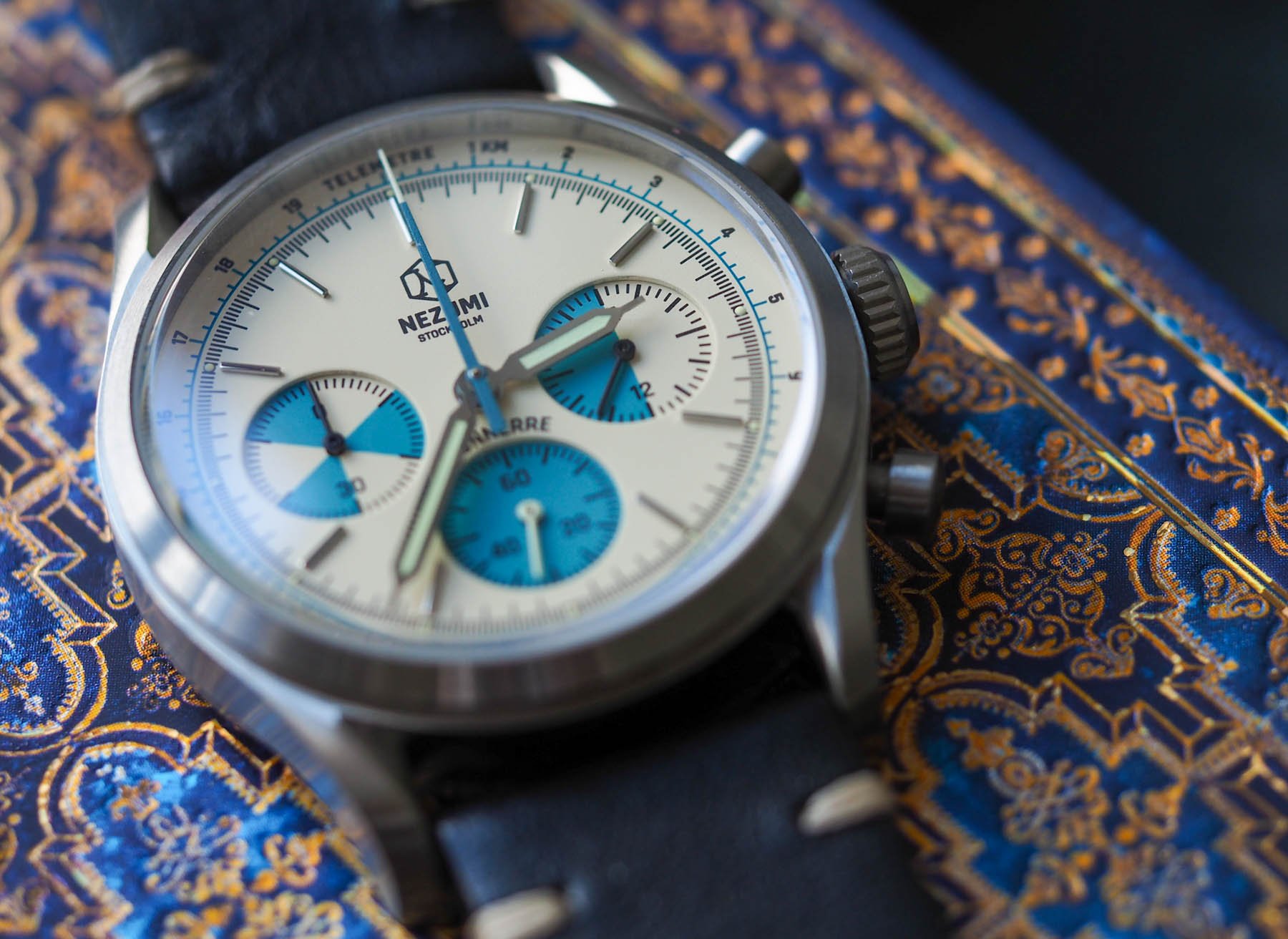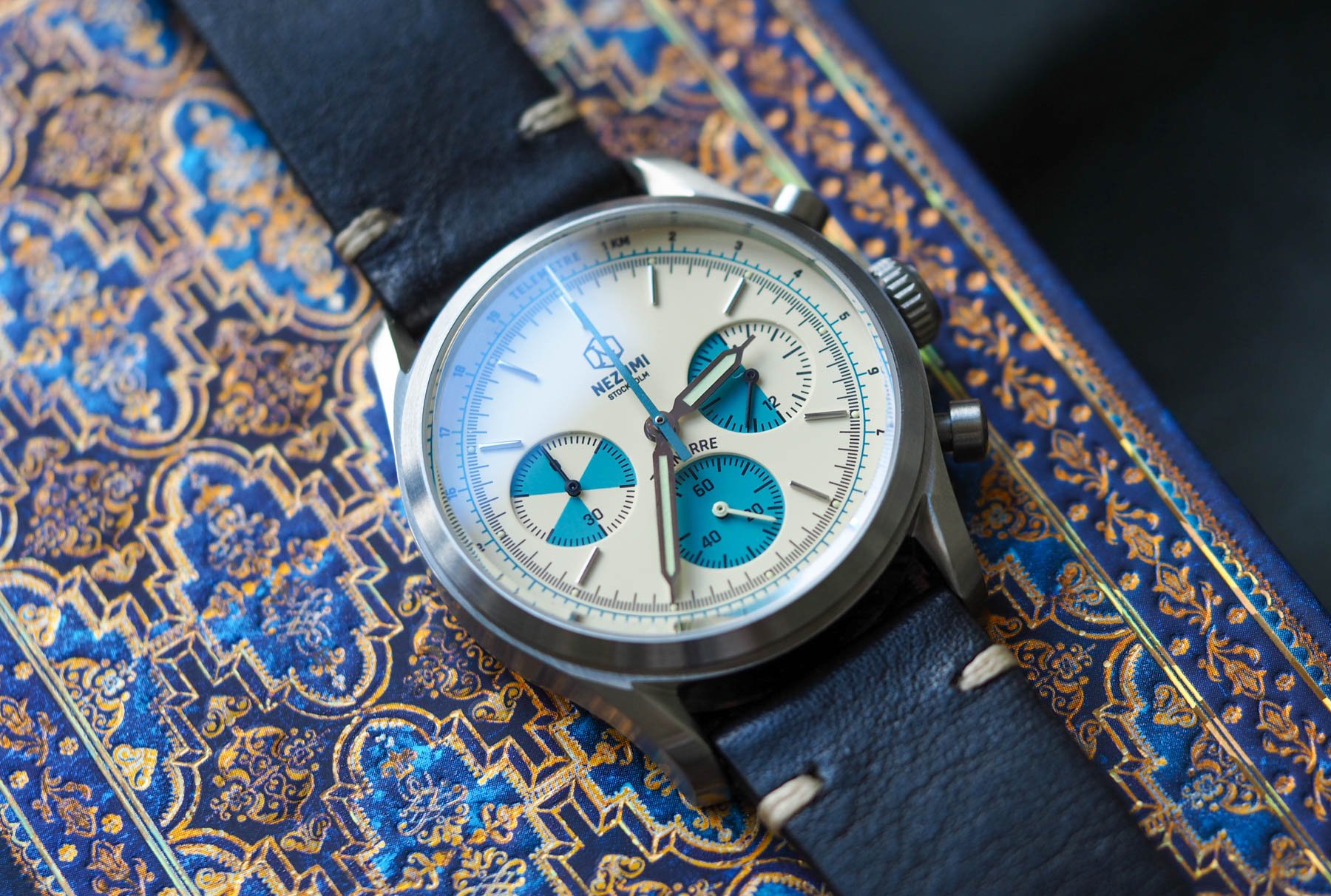Nezumi Tonnerre Chronograph Drops Today And We’ve Got It In For Review Already!
It’s no longer a newsflash to report that I love Nezumi. However, as much as I adore the brand’s core styles, not everything this Swedish outfit produces hits the mark for me. Most recently, I reviewed the DLC-gold plated Nezumi Baleine automatic and, while I liked it, found myself craving a return to the retro simplicity of the mecaquartz chronograph format that, in my opinion, is what makes the brand stand out from its peers. Well, although I had nothing to do with it, I got my wish! The Nezumi Tonnerre Chronograph hits the shelves today and is a breezy, seasonal alternative to the current offering and comes in an all-new size for the brand…
When you set your stall out as a mecaquartz specialist (as Nezumi did with its inaugural release half a decade ago), your brand will live and die on the design of its wares. Typography, spacing, layout, color… While these things are integral to any brand (or at least should be), it matters all the more when that and that alone is what distinguishes you from the crowd. And the great cruelty of design is how the slightest shade or shift can be the difference between triumph and catastrophe.
Spot-on sizing
I’ve always enjoyed the general layout of Nezumi’s 40mm mecaquartz chronographs. I think the sizing is spot on. The proportions of the dial to the bezel to the case have always seemed incredibly comfortable. The watches look natural. Amazingly, although it is the sort of thing people fail to notice, that kind of easy charm is hard to come by. The amount of effort that goes into ensuring every micron is just so to achieve a result that won’t immediately jar is staggering. Taking that winning formula and porting it to a smaller, 38mm case (with a 45mm lug-to-lug), carried with it no guarantee of success. So did the brand pull it off or not? Let’s find out…
The Nezumi Tonnerre
Straight out of the box, I noticed something was different about the Tonnerre. Immediately, I identified its all-brushed finish, which felt very new. Sure, the Corbeau and some versions of the Voiture have been entirely brushed before, but the overwhelmingness of that finish was always tempered by the contrasting bezels. Here, the Tonnerre had nowhere to hide. Just like the Loews before it, it has an entirely steel exterior. Unlike the Loews, however, is the fact it is brushed, smaller, and uses a telemeter scale around the outside of the dial as opposed to a more traditional tachymeter.
The differences do not stop there. While both the Loews and the Nezumi Tonnerre share certain traits like raised, polished hour markers, hour and minute hand design, and hourly luminous lume pips, there are a ton of changes. Perhaps most obviously, the Loews was a two sub-dial layout, while the Tonnerre is a triple. The seconds hand of the Loews was the same as the early Voiture hands, with the “N” counterpoise and burnt orange color.
Many hands make light work
Here, the hand is a straight-sided wedge, color-matched to the turquoise accent of the dial and tipped in white. The sub-dial hands are also different. On the Loews, the hands had square portions around the pivots. This, to me, always looked very “1970s” and was not something I fawned over. Here, however, the hands are much simpler. The going seconds hand (the little ticker at 6 o’clock) is in the same shade of ecru as the dial. It simultaneously contrasts with its sub-dial’s turquoise backing and ties in with the rest of the dial. The 24-hour indicator hand and the 60-minute counter (at 9 o’clock) are both black on this model, which connects the hands to the text on the dial and avoids adding another color to the dial.
Although I really like the hand shape and the symmetry (and visual subtlety) of the hand colors, I am a little surprised that the 60-minute register is chromatically linked to the 24-hour indicator. It is common practice to link functions by color when it comes to chronograph handsets. On the Nezumi Tonnerre that convention is shelved in favor of pure aesthetics. It honestly doesn’t bother me (and I can suggest no neater alternative route), but I thought I’d mention it in case anyone else identified something “odd” about the way the colors are arranged and was struggling to put their finger on it. To summarise, this watch has six hands in a total of four colors. For a 38mm chronograph that sounds like a lot. On the wrist, however, it looks beautiful.
A surprising development
This watch is a surprising development. 40mm is small by chronograph standards. Nezumi’s predilection for mecaquartz movements means the brand’s watches have always been slim. Perhaps most people (this writer included) would have put money on the next step for Nezumi being a hand-wound mechanical chronograph at either 40 or 42mm in diameter. Dialing down the diameter was not something I heard much call for. I therefore must applaud Nezumi for being a leader. As much as brands like Rolex annoy us for their resistance to feedback, I always respect brands that have (and unwaveringly execute) their vision of progress and brand growth. This is a really neat development for the brand and a nice, unexpectedly welcome model to the lineup.
And while Nezumi models all kind of “look the same”, I’ve noticed (after comparing my seven models side by side) that very little component sharing takes place. So let’s take a look at the Tonnerre: obviously, its case size is unique, so not much is really sharable (except the hour and minute hands from the Loews, which are much better suited to the narrower dial of the Tonnerre). Interestingly, however, the set-up of this watch is a mixture of all the things that came before.
The Tonnerre has the hour markers, lume pips, hour and minute hands, and bezel of the Loews. It has the triple-register dial, pronounced pump pushers, and entirely brushed finish of the Corbeau (and most Voitures). It has a totally unique sub-dial/chronograph handset, telemeter scale, glass profile, and crown. Once again, David Campo, founder of the Stockholm-based studio has succeeded in creating something intrinsically on brand, and yet somehow entirely distinct from its previous products.
And what’s better?
Call me crazy, but I swear to goodness that the straps on Nezumi watches (all 20mm) are getting better with every release. The strap feels soft and supple out of the packaging is really comfortable. They smell great, are clearly well-finished, and look much richer than the shinier straps released on the earlier models. Nezumi says all straps are vegetable-tanned: this may be true, but not all vegetable tanning is created equal and these straps feel like they have been very well tanned. This black one on the Tonnare smells like an old-school shoe shop and, I must admit, although I get a lot of pleasure out of flipping my Nezumi watches on all kinds of straps, this one is staying put.
The box is new…
The packaging (first seen on the RUF special edition Voiture) is amazing. There are three things to note about this packaging. One of them is par for the course when it comes to Nezumi boxes but the other two are totally novel for the brand. Firstly, the same graphically impressive style remains. These seventies’ style sketches of the watches and the use of the watch’s primary accent color for the boxes is a really nice touch.
…”smart value”…
I have a collection of five Nezumi boxes (for the Voiture, the Loews, the Corbeau, the Baleine, and now the Tonnare) standing on my shelf in my office. They look awesome lined up next to one another. This is a way to add “smart value”, as I call it. Cardboard boxes are cheap, but by spending a little bit of time and money on their design, you have something that is a pleasure to hold onto. Case in point: I feel more inclined to keep and display these boxes than I do my Omega, Seiko, or Rolex boxes.
Secondly, the Tonnerre is the first core collection Nezumi watch to be delivered in a square rather than a rectangular box. In the past, the cardboard box has been it. It has been everything. Now, the colorful cardboard sheath contains a proper (or more traditional) watch box at least. Generally, I don’t need nor care for this kind of box, but I was amazed to see it is a custom-made effort, with a debossed logo on a “dark mink” (color) mottled surface. The interior is color-matched and soft and velvety, providing the watch with more than ample protection during transportation.
What is that scent you’re wearing?
Thirdly (and really noticeably), the Tonnerre box smells great. This might seem like an odd/silly thing to say, but I get so many (read too many) stinky watches from careless microbrands that don’t seem to understand that first impressions count. And I’m not talking about watches that have done the rounds and come to me last, laden with dirt and wrist cheese. No, I am talking about watches and watch boxes right off the production line that stink to high heaven of chemicals and glue and goodness knows what. It is unequivocally gross when I have to air out a package for a few days before I can even peek inside. And this is me talking. After 23 years of whiskey drinking, my sense of smell is about as sensitive as that of a rock at the bottom of the ocean.
The little things add up
Nezumi’s mecaquartz chronographs tend to retail around the €400 mark. That is, in my opinion, the sweet spot for a very good mecaquartz-powered product. When you step up that price by one or two hundred you will start to run into some pretty stiff mechanical competition (as we discussed recently in my article covering the impressive but pricier SYE MOT1ON). The Tonnerre builds on Nezumi’s strong foundations in this realm and delivers in all the areas you’d expect it to, following on from the particular successes of the Voiture and Corbeau models. Throw into the equation that this model is assembled in Germany and you have a very interesting package indeed…
However, this model is really a successor to the Loews thanks to its fixed, non-functional bezel. I think it bests its dressier forerunner in every category and it will be spending a lot more time on my wrist as a result. That’s come at a good time, as the blue-dialed Loews tends to migrate from my watch box to my girlfriend’s throughout the summer months, so I’m glad that I’ve got a lightweight, bright-dialed replacement to call on whenever I need it. Price will be 3950 SEK (including VAT) and 3160 SEK for orders placed outside of the EU). Learn more about Nezumi and the brand new Tonnerre model on the brand’s official website.

